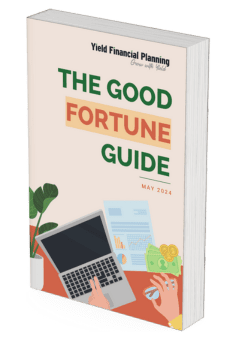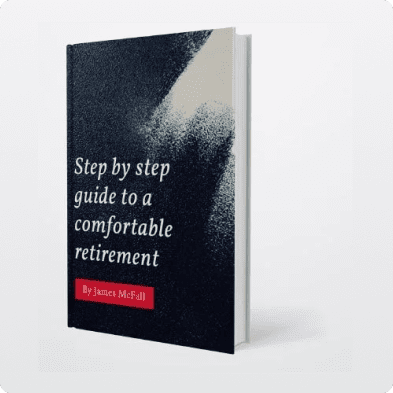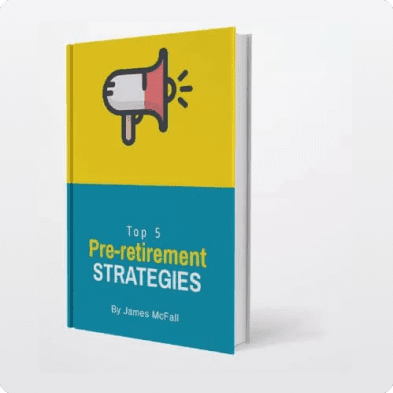A Yield Client Case Study 
$1,932,061 more at Philippa age 90

Strategic planning with estate planning considerations for a blended family

Proactive investment strategy replaced passive savings going in cash

Save $1,708 p.a. by moving tax and audit provider for SMSF

$1,932,061 more at Philippa age 90

Strategic planning with estate planning considerations for a blended family

Proactive investment strategy replaced passive savings going in cash

Save $1,708 p.a. by moving tax and audit provider for SMSF
Our clients George and Philippa are a couple in their late 50s, who came to us wanting to know how well their existing assets would provide for them and wanted advice on creating a retirement plan for their goals.
Specifically, they wanted us to assess what age they would be able to retire at and what they would need to do in retirement to keep their investments providing for their lifestyle.
A unique consideration for Philippa and George is that they are in their second marriage and have children from both relationships.
Introduction – Creating A Retirement Plan
George and Philippa had done a good job building an investment portfolio of direct shares and property, as well as inheriting assets, that contributed to their position.
The couple were looking for clarity on if what they had was enough to see them through retirement and allow them to move to part-time work for 2 or 3 years before their ideal retirement age of 65.
Our job was to project what their current investments and super could provide for them in retirement and to advise on what they could do to optimise their investment strategy, as they progress in retirement.
A concern for them was determining when they would need to sell their investment properties, owned inside an SMSF; and being sure that their investment strategies were making the most of the strategic opportunities available to them.
Overview
The couple had already developed a successful investment portfolio with an SMSF shared between the two. Assets included shares in ASX listed companies, two investment properties held in their SMSF, as well as cash in the bank, which was growing and underutilised.
They also owned their primary place of residence, which they want to keep for the foreseeable future and if they do eventually move, wanted to know they could retain the same overall value in their home.
Our financial projections identified that given the strong financial position they are already in, they would be able to achieve their goal of retiring at age 65 and be able to scale back from work at Philippa’s specified age of 63, and George doing this at age 62.
Whilst this was made possible by the couple’s investment and financial choices to this point, creating a retirement plan gave them real clarity about their financial prospects and provided a clear step-by-step sequence of recommendations which helped improve the tax, investment and estate outcomes, supporting them to feel secure and confident in achieving the milestones which were important to them throughout retirement.
The benefits of our advice and projections long term will help ensure that the couple has an actively managed and personalised investment portfolio that will provide for their retirement well into the future and illustrate for them what they would need to do in retirement to make the most strategic financial decisions to benefit their plans.

Outcomes – Creating A Retirement Plan That Lasts 25+ Years
We recommended that George and Philippa continue maximising concessional contributions to super, now $27,500 a year, which would mean a tax saving of $8,566 per annum.
We also advised on contributing non-concessionally to super in the 2021-22 financial year to the sum of $300,000 – $330,000 to help consolidate their financial position more tax favourably.
A core concern of the couple was knowing when they would need to sell their investment properties owned within their SMSF, which we found would need to happen in the 2046 financial year on current trajectory.
With the recommended strategy we advised the couple to implement, we saw this being pushed back an extra 4 years to the 2050 financial year if they wanted to defer this.
When it came to how George and Phillipa’s new investment solutions would be implemented, our first recommendation was that Philippa’s super balance should be transferred into the couple’s SMSF to save over $1000 a year in unnecessary admin and insurance fees.
To manage the couples SMSF, we recommended using an alternative administrator for the accounting who deliver a holistic centralised service to clients of financial advisors and would save an estimated $1,700 per annum in administration costs.
We also recommended that the couple use half of their investable funds to invest into our Managed Discretionary Account service and the other half into a direct portfolio of diversified funds and ETFs, creating two different investment approaches and investment mix.
Doing so would mean more access to a diversified investment portfolio within their SMSF which also needed its investment strategy updated, which we did for them when creating a retirement plan for the couple.
As the pair were already in a position to retire, we identified that they did not need insurance cover to protect against their ability to fund their own income needs anymore.
However, George & Phillipa have been using life insurance to even up their overall assets to ensure they could share assets evenly between their children.
Estate planning for couples in second marriages is very challenging to navigate and while life insurance had been helpful to this point, it was evident that they needed to get their Wills reviewed and have a deep discussion about how they progressed from here.
As part of our service, we have offered to be part of the discussion with their Estate lawyer of choice if they would like. This sort of personalised approach that we take here at Yield helps ensure that discussions we have, that are held as part of our clients financial plan are fully considered in the context of the legal ramifications in their Will.
Investing for retirement is not a straightforward or one-dimensional process.
Even when you have already accumulated enough to fund your retirement income needs, having a financial planner to help coordinate your finances for retirement could mean far better prospects, with more certainty and less stress for your post-working life.


























